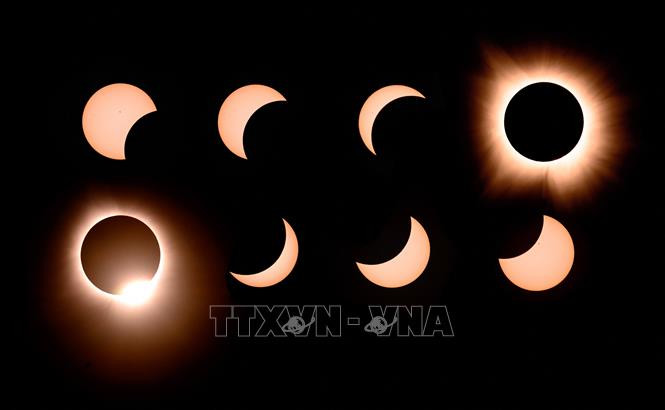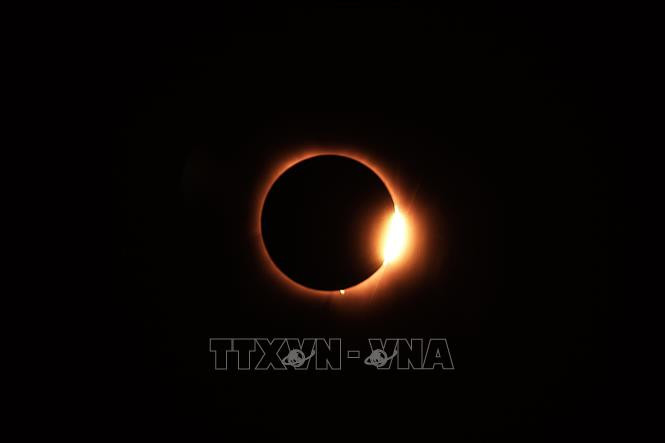On April 8, some places in North America witnessed a total solar eclipse - a sight that is considered "once in a lifetime".

This total solar eclipse - nicknamed the Great American Eclipse because of its long path across North America - was visible in the skies over parts of Mexico, 15 US states and eastern Canada.
The Mexican city of Mazatlan will be the first to see the total solar eclipse as it rises above the Pacific Ocean. The eclipse will peak in Mazatlan at 11:07 a.m. local time and last for more than four minutes. According to NASA, the path of the eclipse will continue from Mexico, enter the United States in Texas, and pass through the states of Oklahoma, Arkansas, Missouri, Illinois, Kentucky, Indiana, Ohio, Pennsylvania, New York, Vermont, New Hampshire, and Maine. Small parts of Tennessee and Michigan will also be able to experience the total eclipse. Cities in Maine will be the last places in the United States to experience the total eclipse.
The total eclipse then entered Canada in the southern province of Ontario, and continued through the provinces of Quebec, New Brunswick, Prince Edward Island, and Cape Breton.

At times of total solar eclipses, crowds in various locations cheered in excitement as they saw the moon block out the sun. Although some places had clouds blocking the full view, people were still excited and cheered as the sky briefly darkened from the daytime.
A total solar eclipse occurs when the moon passes between the sun and Earth, completely blocking the sun's face. At some zoos, researchers have been watching to see how animals behave. NASA says that after this total solar eclipse, the next total solar eclipse will be visible from the US states on August 23, 2044.